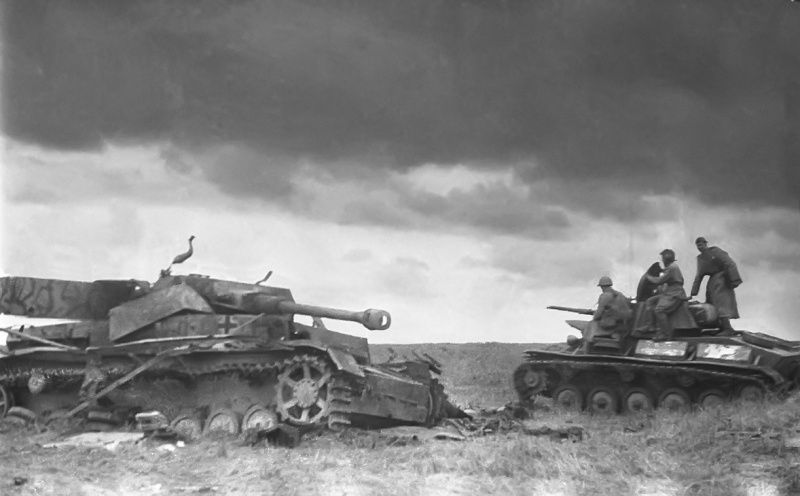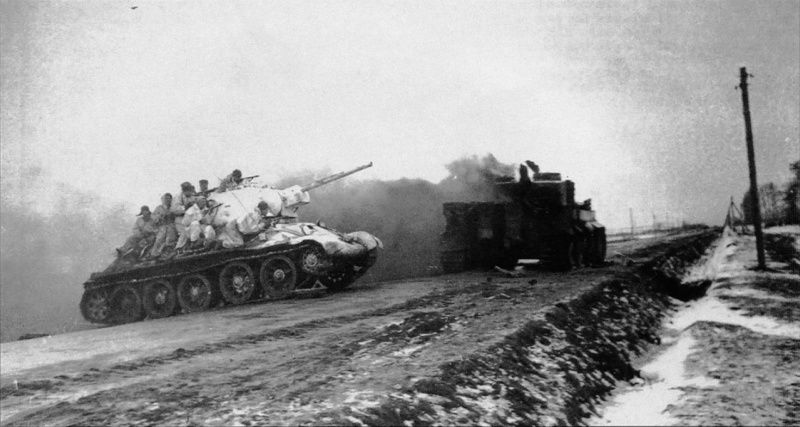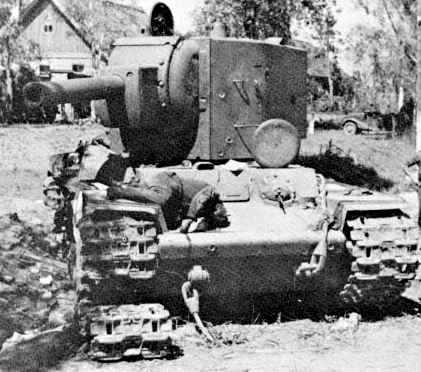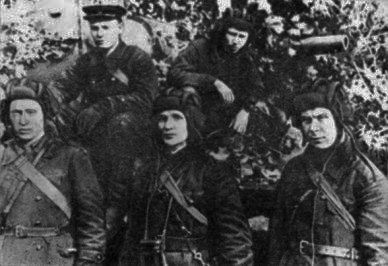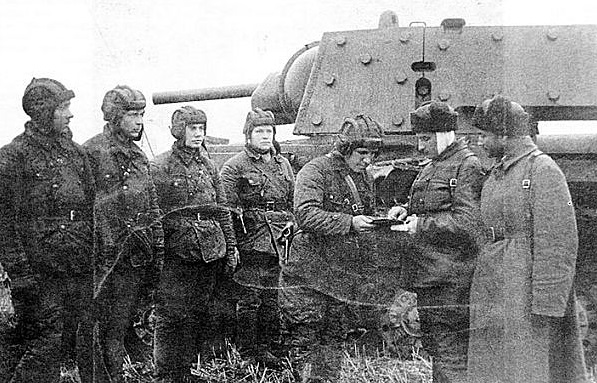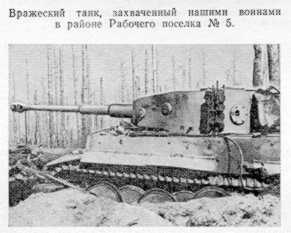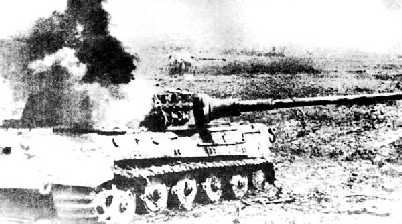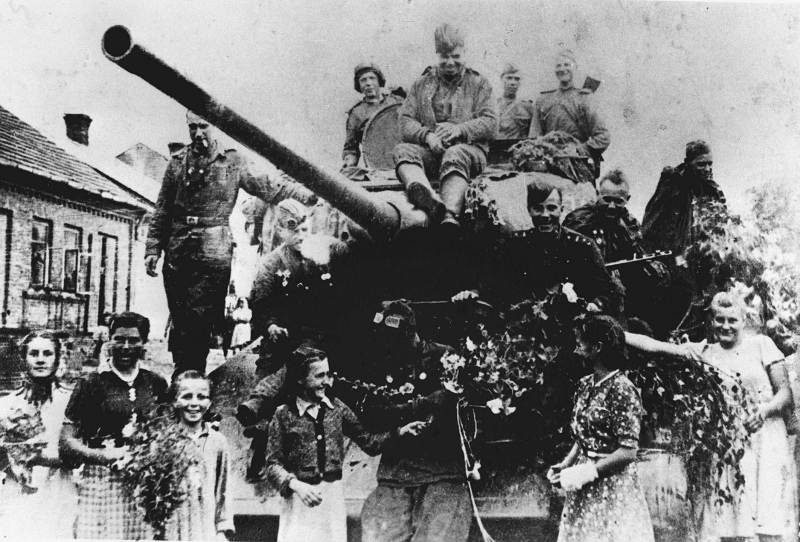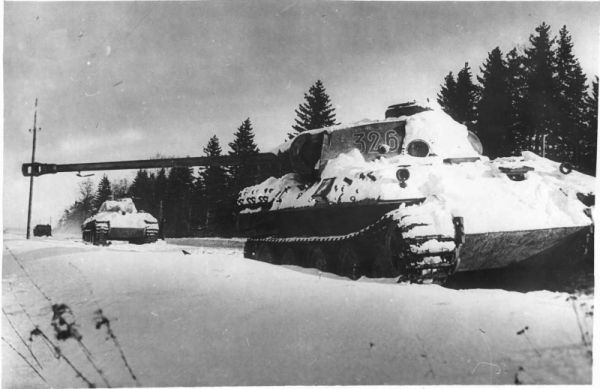Some data about the tank forces of the decisive WW2 front
(~75% of German ground and air forces were destroyed at Eastern front)
WWII Tanks and AFVs in combat
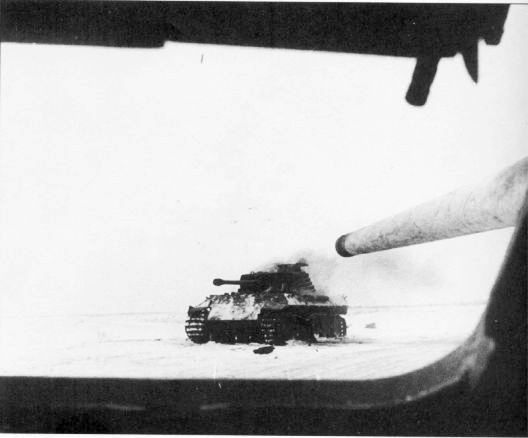
"Direct hit !" - a view from SU-85 to the knocked out Pz.Kpfw.V Panther |
The insignias of the Soviet armor units
Tank stories , Armor specifications , Lend-Lease Soviet armored cars , tracktors , trains , railcars German panzers , SPGs , APCs in Soviet service German armor in Yugoslav army , in other slavic armies Soviet light , medium , heavy tanks in German service Soviet armored cars , Foreign armour in German service Soviet armor in Finnish service Soviet tanks in Yugoslav , Czechoslovak , Chinese units Soviet SPGs , T-34 , IS-2 , armor in Polish units German SPG , Pz.III , Pz.IV , Pz.VI , Flak , APC | |||
|
T-34 manual (Russian language) T-26 manual (big PDF file)
French armor Polish armor British armor Belgian armor Italian armor Japanese armor Hungarian armor Romanian armor
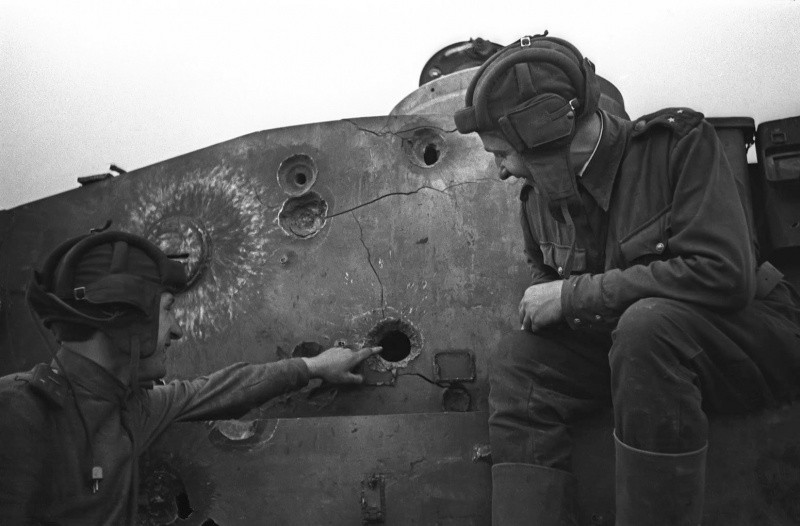
 Victor A. Aminev (BA-10, 8th armoured brigade) destroyed 4 Japanese tanks
on 4th Jule 1939. Till 7th July he destroyed 2 tanks more, and also 2 guns and 2 armoured cars.
Victor A. Aminev (BA-10, 8th armoured brigade) destroyed 4 Japanese tanks
on 4th Jule 1939. Till 7th July he destroyed 2 tanks more, and also 2 guns and 2 armoured cars. 2nd Polish tank battalion (7TP) clashed with the Germans on 5th September 1939.
The Poles killed 15 German tanks, and German AT guns killed 13 Polish tanks.
2nd Polish tank battalion (7TP) clashed with the Germans on 5th September 1939.
The Poles killed 15 German tanks, and German AT guns killed 13 Polish tanks. On 15th May 1940, one French B-1bis heavy tank of 1/28 BCC (under command of
Sous-lieutenant Louis Latapie) killed 7 German tanks.
On 15th May 1940, one French B-1bis heavy tank of 1/28 BCC (under command of
Sous-lieutenant Louis Latapie) killed 7 German tanks.  Porucik Jasiok Rudolf (1 ceskoslovenska samostatna tankova brigada; T-34 ?) killed 4 panzers, 1 assault gun and 3 ATGs.
Porucik Jasiok Rudolf (1 ceskoslovenska samostatna tankova brigada; T-34 ?) killed 4 panzers, 1 assault gun and 3 ATGs. One American ace is known: staff sergeant Lafayette G. Pool of 3rd tank division.
His unofficial score is 258 vehicles, the most of them are halftracks and lorries,
and 12 tanks and SPGs, also many different emplaces of guns - allegedly only in 80 days.
One American ace is known: staff sergeant Lafayette G. Pool of 3rd tank division.
His unofficial score is 258 vehicles, the most of them are halftracks and lorries,
and 12 tanks and SPGs, also many different emplaces of guns - allegedly only in 80 days. Sydney Valpy Radley-Walters, gunner of 27th Canadian Armoured Regiment
(Sherbrooke Fusiliers Regiment) in his Sherman Firefly killed 18 German panzers and StuGs in 1944-45.
Sydney Valpy Radley-Walters, gunner of 27th Canadian Armoured Regiment
(Sherbrooke Fusiliers Regiment) in his Sherman Firefly killed 18 German panzers and StuGs in 1944-45.